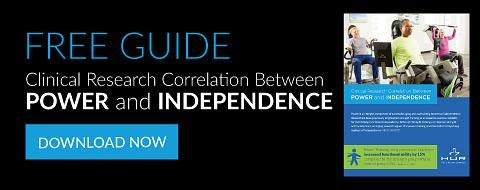The Cyclical Relationship Between Happiness and Health
Over the last couple of decades, there has been a growing body of scientific research connecting happiness to physical health and overall well-being. Much of this research has come from the emerging field of Positive Psychology, a branch of psychology with a slightly different focus than other psychological research.
Historically, psychology has focused on understanding and offerings remedies for anxiety, depression, fear, stress, and other mental states and disorders that contribute to a sense of unhappiness. Positive psychology seeks to examine the benefits and causes of positive emotions, compiling a body of research that helps us understand the traits and conditions that lead to happiness.
Today, there is a considerable amount of research that offers strong evidence that positive emotions have a significant impact on physical health, resulting in a higher-quality, healthier, and longer life. What does this mean for health care professionals focused on active aging and senior living? Let’s take a deeper look at the research to find out.
What does ‘happiness’ mean?
Like many other components of mental and emotional health, happiness is largely subjective. Even so, it is possible to measure and study the concepts around what it means to be happy. Most happiness research is focused on four primary points of study:
- Personal well-being: Research that focuses on personal well-being examines subjective experiences of joy, contentment, and a sense that one’s life is meaningful and “good”.
- Happiness traits: Optimism, enthusiasm, humor, gratitude, and a sense of hope for the future.
- Positive emotions: Experiential, fleeting, in-the-moment feelings such as happiness, love, joy, excitement, and contentment.
- The physical sensation of being happy: What does happiness feel like? How does sensory experience provide enjoyment and enrich our lives?
Positive Psychology researchers seek to not only offers insight into each of these dimensions but isolate distinct areas of the brain that become active as we experience different moods and emotions. Studies show that there are three primary factors that contribute to a state of “chronic happiness” – a state of being that is more resilient to the normal ups and downs of life: Genetics, circumstances, and efforts.
While it might be tempting to assume that circumstances such as wealth are a major contributor, research indicates that our circumstances are only responsible for roughly 10% of our happiness. 50% of our happiness is likely due to genetic temperament and disposition, leaving a whopping 40% firmly within our control. Efforts that contribute to happiness include daily behavior patterns (habits), how we choose to think about people and situations, and what we select as personal goals and meaningful activities.
What does all this have to do with physical health?
Quite simply, studies show that happier people have a higher immune system, fewer chronic pain conditions, are unlikely to experience a fatal accident, and have a lower risk of diabetes and heart disease.
1. Happiness and Heart Disease
Researchers at Johns Hopkins University School of Medicine followed 1,500 siblings with a strong family history of heart disease. The study found that positive well-being – optimism, happiness, life satisfaction, and vitality - contributed to a nearly 30% reduction in heart disease for healthy people with a genetic predisposition to the disease. Breaking it down further, those with the highest risk of having a heart attack were 50% less likely to have one if they exhibited traits of positive well-being.
Another study published in the Neurobiology of Aging, found that individuals who reported higher levels of happiness also had lower resting heart rates and low blood pressure when compared with those who felt less happy.
2. Happiness and Immune Health
There is a large body of research showing that happiness is related to a strong immune system, including a higher likelihood of recovering quickly from illness and disease. A study from the University of Wisconsin-Madison found that people who were highly optimistic with low levels of stress and anxiety experienced a stronger antibody response after receiving a flu shot.
Researchers at Carnegie-Mellon University assessed the general positivity in individuals between the ages of 21 and 55 before exposing them to cold or flu viruses. Those whose emotional well-being could be described as largely happy, lively, and calm had significantly less risk of becoming sick than those who reported feeling anxious, angry, or depressed.
3. Happiness and Chronic Pain
Research shows that happy people with a largely positive mood are more able to cope with chronic pain. This makes sense when you consider that pain is something we experience on both an emotional and physical level. It’s a distinctly sensory event that causes emotional responses of fear and anxiety. When pain strikes, having a positive disposition has been shown to improve resilience, increase our tolerance to pain, and help us live a high-quality life despite chronic pain.
4. Happiness and Longevity
One of the most talked about studies when it comes to the link between happiness and longevity is often referred to as the “nun study”. Researchers examined 60 years of diary entries from nuns who began journaling in their 20s. Overall, those whose diaries revealed the most positive emotions outlived the others by an average of 7 – 10 years.
In a 5-year study of British adults aged 52-79, researchers found that those who generally felt happy and content with their lives were 35% more likely to outlive those who felt unhappy and unsatisfied with their life.
The Cycle of Happiness and Health Within the Dimensions of Wellness
As research continues to prove, happy people tend to be healthier people. We also know that healthier people tend to be more physically active and socially connected, two factors that further contribute to overall health and well-being – AND generate positive emotions. In this way, happiness, physical exercise, and social connection work together to create an upward-spiral.
Positive emotions lead to the desire for physical activity and a drive to foster social connections, both of which lead to better health and more positive emotions. Also… physical activity can boost positive emotions and provide a platform for social connection, leading to better health and a desire to be more active and socially connected.
On and on the cycle goes. Adding even more momentum, people who are generally satisfied with their life are less likely to smoke, more likely to eat a healthy diet, and less likely to take unnecessary risks with their physical health.
So, how can health care professionals support this happiness-health cycle for adults of all ages?
There’s no magic bullet to happiness, and some of it is genuinely out of our control. However, since whole person health cannot be separated from lifestyle choices and differences in mental, emotional, social, and spiritual needs and desires, building momentum behind the cycle of happiness and health sometimes begins with engaging in an activity that supports just one level of the Dimensions of Wellness.
For example, encouraging someone who is feeling isolated and lonely to attend an exercise class or hiking group supports physical health and fosters social connection. Meaningful social connections can support emotional and intellectual health, providing the energy and motivation to engage in additional physical activities. Better physical health generates a sense of well-being that motivates greater social involvement. All of these things work together to replace feelings of loneliness with those more aligned with happiness.








